Table of Contents
Come join us now, and enjoy playing your beloved music and browse through great scores of every level and styles!
Can’t find the songbook you’re looking for? Please, email us at: sheetmusiclibrarypdf@gmail.com We’d like to help you!
Sorabji: In the Hothouse (from Two Piano Pieces) sheet music, Noten, partitura, spartiti 楽譜

Best Sheet Music download from our Library.

Please, subscribe to our Library.
If you are already a subscriber, please, check our NEW SCORES’ page every month for new sheet music. THANK YOU!
Browse in the Library:
Or browse in the categories menus & download the Library Catalog PDF:
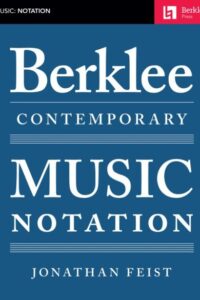
Who was Sorabji?
Kaikhosru Shapurji Sorabji: The Hermit of Modernist Maximalism
In the often-crowded pantheon of 20th-century composers, Kaikhosru Shapurji Sorabji (1892-1988) occupies a unique and enigmatic niche. A composer of staggering ambition, labyrinthine complexity, and self-imposed isolation, Sorabji crafted some of the most monumental, technically demanding, and stylistically idiosyncratic music ever conceived. His work, largely ignored during his lifetime and still challenging audiences today, represents a singular path through modernism – one defined by maximalism, intricate ornamentation, transcendental virtuosity, and a fierce, almost hermetic, independence.

Biography: A Self-Forged Identity
- Birth & Heritage: Born Leon Dudley Sorabji on August 14, 1892, in Chingford, Essex, England. His father was a Parsi engineer from India (thus the Persian-derived name Sorabji), and his mother was English-Spanish. This mixed heritage profoundly shaped his sense of identity, though he felt alienated from both cultures.
- The Name: Around 1914, he legally changed his name to Kaikhosru Shapurji Sorabji. “Kaikhosru” and “Shapurji” were Persian names chosen for their resonance and connection to ancient Persian history and Zoroastrianism, reflecting his deliberate construction of a unique persona.
- Musical Formation: Largely self-taught. He received some piano lessons in his youth but had no formal composition training. His musical education came through voracious listening, score study (especially Bach, Liszt, Busoni, Debussy, Ravel, Scriabin, Szymanowski, Medtner), and wide reading in literature, philosophy, and the occult.
- Early Career & Criticism: Worked as a music critic (under the pseudonym “S. Godfrey”) for outlets like The New Age and The New English Weekly from the 1910s to the 1930s. His critiques were famously acerbic, insightful, and often scathing, particularly targeting English musical provincialism and composers he deemed mediocre (which was most of them).
- The Recluse: Deeply disillusioned by the musical establishment and critical reception to his early performances (which were rare and often controversial), Sorabji gradually withdrew from public musical life starting in the late 1930s. After his mother’s death in 1940, he retreated almost completely to his secluded home “The Eye” in Corfe Castle, Dorset, where he lived with his companion, Reginald Norman Best, until his death. He forbade performances of his music for decades.
- The Ban Lifted: In 1976, pressured by a growing underground interest spearheaded by pianists like Yonty Solomon and Alistair Hinton (who later became his literary executor), Sorabji reluctantly lifted the ban on performances, provided he approved the performer.
- Death: Sorabji died on October 15, 1988, in Winfrith Newburgh, Dorset, leaving behind a colossal legacy of unpublished manuscripts.
Works: Monuments of Sound

Sorabji’s output is vast and overwhelmingly dominated by solo piano music, though he also composed orchestral works, chamber music, organ symphonies, and songs. His works are renowned for their extreme length, density, and technical difficulty, pushing the boundaries of playability.
- Key Masterpieces:
- Opus Clavicembalisticum (1930): His most famous (or infamous) work. A colossal 4+ hour piano epic in 12 movements (including fugues, passacaglias, toccatas, cadenzas), often considered one of the most challenging solo piano works ever written. A summit of contrapuntal complexity and virtuosic display.
- Symphonic Variations for Piano (1935-37): Another monumental work, exploring vast variation forms over an extended duration.
- Sequentia Cyclica super “Dies iræ” ex Missa pro Defunctis (1948-49): A massive cycle of 27 variations on the “Dies Irae” chant, demonstrating his intricate contrapuntal and transformative skills.
- 100 Transcendental Studies (1940-44): True to their name, these studies explore extreme technical and expressive demands far beyond those of Liszt or Chopin.
- Symphonies for Solo Piano: Several exist, including his Symphony No. 2 (“Jāmī”), blending orchestral textures and scope onto the piano.
- Gulistān – Nocturne for Piano (1940): A prime example of his lush, perfumed, and incredibly intricate “Persian”-inspired style.
- Concerti: He wrote several for solo piano and orchestra (e.g., Concerto per suonare da me solo e senza orchestra, per divertirsi), which are symphonic in scale and require superhuman virtuosity.
- Symphonies for Organ: Vast, complex works exploring the sonic possibilities of the instrument.
Analysis of Style: A Universe of Complexity
Sorabji’s style is instantly recognizable yet difficult to categorize. It synthesizes diverse elements into a unique and overwhelming whole:
- Maximalism: This is the defining characteristic. Sorabji embraced extremes:
- Length: Works lasting several hours are common.
- Density: Highly polyphonic textures, often with multiple independent melodic lines woven together in complex counterpoint (influenced by Bach, Busoni).
- Virtuosity: Demands transcendental technique – cascades of notes, complex polyrhythms, wide leaps, immense power, and extreme delicacy. He wrote as if the pianist had four hands.
- Ornamentation: Baroque-like ornamentation (trills, mordents, turns, grace notes) is ubiquitous, often layered and integral to the texture, creating shimmering, kaleidoscopic surfaces (influenced by Scriabin, Szymanowski, Middle Eastern/Persian music).
- Dynamic Range: From barely audible whispers to thunderous, percussive climaxes.
- Harmony: A complex fusion:
- Rooted in late-Romantic chromaticism (Scriabin, Szymanowski, early Schoenberg).
- Freely employed dissonance, clusters, and intricate chord structures.
- Often retained a sense of tonal centers or polarity, even amidst dense chromaticism (unlike strict atonality).
- Incorporated modal inflections, sometimes evoking Persian or Spanish flavors.
- Rhythm: Highly complex and fluid:
- Frequent use of polyrhythms (multiple simultaneous rhythms), cross-rhythms, and nested tuplets (triplets within quintuplets, etc.).
- Tempo often fluctuates wildly, requiring immense control.
- A sense of improvisatory freedom within highly structured forms.
- Form: Often large-scale, complex, and idiosyncratic:
- Favored variations (passacaglias, chaconnes), fugues, toccatas, and intricate multi-movement structures (like the Opus Clavicembalisticum).
- Forms were often expansive and cumulative, building through layered repetition and intensification rather than traditional development.
- Architecture was paramount, even in the densest textures.
- Influences (Assimilated, Not Imitated):
- Ferruccio Busoni: The most profound influence. Busoni’s ideas of “Young Classicism,” the transcendental potential of the piano, the fusion of Bachian counterpoint with modern harmony, and the concept of “Junge Klassizität” resonated deeply. Sorabji dedicated his Opus Clavicembalisticum to Busoni’s memory.
- Franz Liszt: Virtuosity, thematic transformation, large-scale forms, and the symphonic poem concept translated to piano.
- J.S. Bach: Contrapuntal mastery, structural rigor, and the use of forms like fugue and passacaglia.
- Alexander Scriabin: Mysticism, harmonic language, dense textures, and ecstatic climaxes.
- Karol Szymanowski: Sensuous harmony, intricate ornamentation (especially in the “Persian” inspired works like Métopes and Masques), and voluptuous textures.
- Debussy & Ravel: Color, texture, exoticism, and pianistic refinement.
- Mediterranean & Persian Cultures: While not authentically recreating these styles, he evoked their essence through ornamentation, melodic turns, and titles (Gulistān, Jāmī), reflecting his fascination with his Persian heritage and the wider Orient.
- Aesthetic: Sorabji’s music aimed for:
- Transcendence: Pushing beyond perceived limits of instrument, performer, and listener.
- Luxuriance & Opulence: A rich, sensual, almost decadent sound world.
- Intellectual Rigor: Underlying the sensual surface was meticulous structural planning.
- Individualism: A complete rejection of prevailing trends (serialism, neoclassicism, minimalism) in favor of his own uncompromising vision.
Legacy: From Obscurity to Cult Status
Sorabji’s legacy is complex and evolving:
- Decades of Neglect: His self-imposed exile and performance ban meant his music was virtually unknown outside a tiny circle for nearly 40 years. Manuscripts were inaccessible, unplayable, and unpublished.
- The Pioneers (1970s-): The lifting of the ban sparked interest. Pianists like Yonty Solomon, Michael Habermann, Geoffrey Douglas Madge (who made the first complete recording of Opus Clavicembalisticum in 1977), and later Marc-André Hamelin, Jonathan Powell, Fredrik Ullén, and Ronald Stevenson began the monumental task of learning, performing, and recording his works. This required immense dedication and technical prowess.
- Publication & Scholarship: The Sorabji Archive, established by Alistair Hinton (Sorabji’s literary executor), has been crucial in cataloging, editing, and facilitating the publication of scores (primarily by Dover Publications and The Sorabji Music Archive). Scholarly work is gradually increasing.
- Recordings Renaissance: The CD era and digital distribution (YouTube, streaming) have been transformative. Dedicated labels (Altarus, BIS, Toccata Classics, Piano Classics) have released numerous recordings, making this once-inaccessible music available globally. Complete cycles of the 100 Studies and other major works are underway.
- The Cult & The Challenge: Sorabji remains a “composer’s composer” and a cult figure. His music is not mainstream concert fare due to its extreme demands and duration. However, it commands deep respect and fascination among pianists, composers, and listeners drawn to its unique sound world and uncompromising vision. He is seen as the ultimate iconoclast, forging a path utterly independent of 20th-century musical fashions.
- Influence: His direct influence on other composers is hard to pinpoint due to his obscurity, but he stands as a powerful symbol of uncompromising artistic integrity and the exploration of extreme complexity and virtuosity. Composers interested in maximalism, intricate counterpoint, or pushing pianistic limits inevitably encounter his shadow.
- Copyright Controversy: The complex copyright status of his works (involving the Sorabji Archive and publishers) has sometimes been a point of friction within the community of performers and scholars seeking access.
Sorabji: The Solitary Giant
Kaikhosru Shapurji Sorabji was a true original. He inhabited a musical universe entirely of his own making, synthesizing diverse influences into a style characterized by unparalleled complexity, sensuous opulence, and transcendental ambition. His deliberate withdrawal from the world ensured decades of obscurity, but the dedication of pioneering performers and the power of recording technology have brought his extraordinary soundscapes to light. While his music remains challenging and demanding, it offers unparalleled rewards: a journey into a world of labyrinthine beauty, overwhelming power, and intellectual fascination. Sorabji stands as a testament to the power of an utterly individual artistic vision, uncompromising in its scope and ambition, a solitary giant whose monumental creations continue to challenge and inspire. He redefined the possible for the piano and left a legacy that continues to unfold as more performers dare to scale his musical Himalayas.
“In the Hothouse” is one of Sorabji’s most evocative and frequently performed works, serving as a perfect entry point into his dense, sensuous sound world. Here’s a detailed look at this fascinating piece:
Context: Two Piano Pieces (1918)
- Composed: 1918 (early in Sorabji’s career, age 26).
- Publication: First published in 1920, making it one of the earliest Sorabji works available in print.
- The Pair: “In the Hothouse” is paired with “Toccata” – a contrasting, hyper-virtuosic, and structurally complex piece showing his Busoni/Liszt influences. “In the Hothouse” offers the sensual, atmospheric counterpoint.
- Significance: Represents Sorabji’s early mastery of texture, harmony, and evocative atmosphere. It predates his gargantuan works but already displays his unique voice.
“In the Hothouse”: A Sensory Immersion
- Title & Imagery: The title instantly conjures an environment: humid, lush, teeming with exotic, overripe plant life, heavy perfumes, and stifling, enclosed heat. Sorabji translates this sensory overload into sound.
- Form & Structure: Relatively free and rhapsodic. It unfolds as a continuous, organic stream of consciousness rather than adhering to strict classical forms. Think of it as an elaborate, decadent arabesque.
- Style & Character:
- Extreme Sensuality: This is the defining feature. The music drips with lush, complex harmonies and suffocatingly rich textures.
- Harmony: Deeply chromatic, rooted in late Scriabin and early Szymanowski. Expect dense, constantly shifting chords: augmented harmonies, whole-tone inflections, unresolved dissonances creating tension, and sudden moments of surprising consonance like shafts of light piercing foliage. It avoids traditional tonality but gravitates around implied centers.
- Texture: Thick, layered, and constantly in motion. Tremolos, trills, rapid filigree (ornamental passages), and cascading arpeggios create a shimmering, humid haze. Melodies are often embedded within this dense undergrowth rather than standing clearly apart. The writing often requires the pianist to sustain multiple layers simultaneously.
- Rhythm: Fluid and flexible, often obscured by the sheer density of notes and ornamentation. Rubato (expressive tempo fluctuations) is essential. While less overtly complex polyrhythmically than his later works, the rhythmic flow feels organic and improvisatory.
- Dynamics & Articulation: Wide dynamic range, often shifting suddenly between extremes (e.g., thunderous climaxes collapsing into fragile whispers). Articulation varies from sharp staccatos to legatissimo passages that blur together. Pedaling is crucial for sustaining the harmonic haze and creating resonance.
- Ornamentation: Quintessential early Sorabji. Trills, mordents, turns, and grace notes are not mere decoration; they are the texture, creating constant flickering movement and contributing to the claustrophobic, teeming atmosphere. This foreshadows the intricate ornamentation dominating his mature style.
- Emotional Landscape: Evokes opulence, decadence, languor, mystery, stifling heat, hidden dangers, and overwhelming sensory stimulation. There’s a sense of beauty bordering on the grotesque due to its sheer intensity.
Influences Audible in “In the Hothouse”
- Scriabin (Primary): The harmonic language (mystic chords, unresolved dissonance, ecstatic climaxes), the sensual atmosphere, and the use of trills/tremolos are deeply indebted to Scriabin’s late sonatas and poems (e.g., Vers la flamme). Sorabji pushes Scriabin’s decadence further.
- Szymanowski: The opulent textures, perfumed harmonies, and “orientalist” exoticism (though abstracted here) strongly recall Szymanowski’s “Métopes” or “Masques,” which Sorabji admired deeply.
- Debussy: The focus on atmosphere, texture, and harmonic color (whole-tone scales, parallel chords) shows Debussy’s influence, though rendered with far greater density and intensity.
- Ravel: The virtuosic filigree and lush harmonies (think “Gaspard de la Nuit,” especially “Ondine” or “Le gibet”) are a touchstone, again amplified.
- Liszt: The rhapsodic freedom and dramatic gestures hint at Liszt, though filtered through a post-Scriabinesque lens.
Performance Challenges
- Texture & Balance: Maintaining clarity amidst the dense, rapidly shifting textures is paramount. The pianist must carefully voice chords and layers to prevent muddiness while sustaining the essential harmonic haze.
- Ornamentation as Texture: Executing the constant ornamentation smoothly and evenly, integrating it into the melodic and harmonic flow rather than treating it as mere decoration.
- Dynamic Control: Navigating the extreme dynamic contrasts and sudden shifts without sounding jarring. Creating a true pianissimo shimmer within complexity is incredibly difficult.
- Rubato & Phrasing: Applying expressive tempo fluctuations naturally while maintaining the overall structural coherence and forward momentum of the rhapsodic form.
- Pedaling: Using the pedal to create resonance and blend without causing harmonic blurring or loss of rhythmic definition. Requires exceptional sensitivity.
- Stamina & Focus: While shorter than his later works (typically 12-15 minutes), the piece demands intense concentration and physical control to sustain the atmosphere and navigate the technical intricacies.
Legacy & Significance of “In the Hothouse”
- Accessibility: It remains one of Sorabji’s most “accessible” works due to its evocative title, relatively shorter duration, and concentrated expression. It’s a frequent choice for pianists introducing audiences to Sorabji.
- Blueprint: It serves as a crucial blueprint for Sorabji’s mature style, showcasing his core preoccupations: sensuality, harmonic density, intricate ornamentation as texture, and atmospheric evocation, all present in embryonic form.
- Performance History: Despite Sorabji’s later ban, “In the Hothouse” (along with the Toccata) was one of the few pieces occasionally performed during his lifetime (e.g., by Sorabji himself and pianist Reginald Paul) and became a key work for the pioneering generation post-1976 (Yonty Solomon, Michael Habermann, Marc-André Hamelin, Jonathan Powell, Fredrik Ullén).
- Gateway Piece: It functions as a vital “gateway drug” into Sorabji’s world. Its success in conveying its intense atmosphere often encourages listeners to explore his more monumental, complex works.
- Standalone Masterpiece: Regardless of its role as an introduction, it stands as a perfectly formed and powerful piece of early modernist piano writing, a miniature tone poem of extraordinary evocative power.
“In the Hothouse” is a sun-drenched, overripe, and intoxicating immersion into Sorabji’s unique aesthetic. It captures the essence of his sensual maximalism in a concentrated dose, showcasing his debt to Scriabin and Szymanowski while asserting his own distinct voice. Its evocative power, technical brilliance, and relative brevity ensure its enduring place as one of his most beloved and frequently performed works, offering a compelling glimpse into the hothouse of Sorabji’s extraordinary musical imagination.
| Artist or Composer / Score name | Cover | List of Contents |
|---|---|---|
| Contemporary Hits 2nd Edition Arr Phillip Keveren The Phillip Keveren Series Piano Vocal Guitar |
 |
Contemporary Hits 2nd Edition Arr Phillip Keveren The Phillip Keveren Series Piano Vocal Guitar |
| Contemporary Hits Of The Nineties Piano Vocal Guitar |
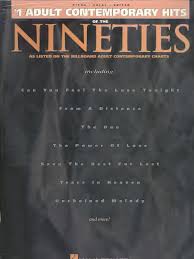 |
Contemporary Hits Of The Nineties Piano Vocal Guitar |
| Contemporary Jazz Giants JAZZ CLASS Piano Solos. |
 |
Contemprary Jazz giants piano solos |
| Contemporary Jazz Piano 2020 By Claudio Angeleri (Italiano Italian) |
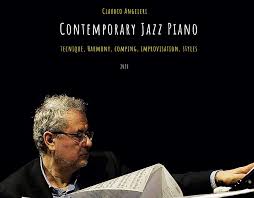 |
Contemporary Jazz Piano 2020 By Claudio Angeleri (Italiano Italian) |
| Contemporary Movie Hits Intermediate Piano Solos arr. by Carol Klose, Jennifer Linn and Wendy Stevens |
 |
Contemporary Movie Hits Intermediate Piano Solos arr. by Carol Klose, Jennifer Linn and Wendy Stevens |
| Contemporary R&B Hits Piano Vocal Guitar R&B Rhythm and blues R’n’B |
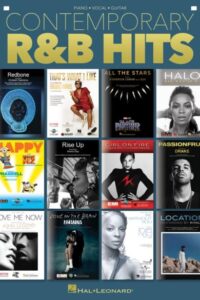 |
Contemporary R&B Hits Piano Vocal Guitar |
| Contemporary sheet music Anthology (Berio,Bolling,Brouwer, Bussotti,Jarrett,Kodaly, Ligeti,Schnittke, Sciarrino,Stella,Williams, Stockhausen) | Contemporary | |
| Contemporary Women Of Pop And Rock Songbook Piano Vocal Guitar chords |
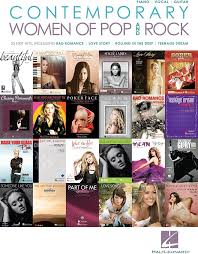 |
Contemporary Women Of Pop And Rock Songbook Piano Vocal Guitar chords |
| Contemporary Worship Classics 10 Richly Arranged Piano Solos By Mark Hayes |
 |
Contemporary Worship Classics 10 Richly Arranged Piano Solos By Mark Hayes |
| Contre Jour David Ari Leon Monsters |
 |
|
| Contre Jour Soundtrack David Ari Leon La Nuit The Night |
 |
|
| Cool Jazz Jazz Piano Solos Series – Vol. 5 – |
 |
Cool Jazz Jazz Piano Solo Series – Vol. 5 |
| Cool Jazz Jazz Piano Solos Series – Vol. 5 (Second Edition) |
 |
Cool Jazz Jazz Piano Solo Series – Vol. 5 (Second Edition) |
| Cootie Williams – Sweet Lorraine Solo Transcription | Cootie Williams – Sweet Lorraine Solo Transcription | |
| Copland – Piano Fantasy |
 |
|
| Copland – Piano Sonata |
 |
|
| Copland – Fanfare For The Common Man (Score And Parts – Boosey & Hawkes) |
 |
|
| Copland – Four Piano Blues No 3 (Musescore File).mscz | ||
| Copland – Four piano blues sheet music |
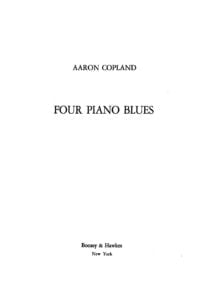 |
Copland – Four piano blues sheet music |
| Copland – The Cat and The Mouse – Scherzo Humoristique |
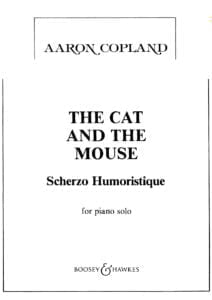 |
|
| Copland Aaron (Arr. Bernstein) – El Salón México |
 |
|
| Copland Clarinet Concerto (Clarinet And Piano Reduction) |
 |
|
| Copland Clarinet Concerto (Musescore File).mscz | ||
| Copland Four Piano Blues 1 (Musescore File).mscz | ||
| Copland Passacaglia for Piano solo |
 |
|
| Copland Rodeo – Corral Nocturne (piano sheet music) |
 |
|
| Copland Three Moods (piano) |
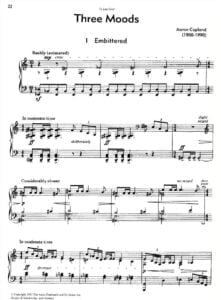 |
|
| Copland, Aaron – A Guide To Research Composer Resource Manual (2001) Biography |
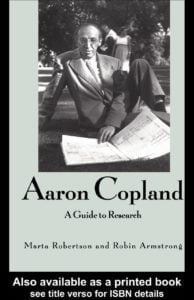 |
|
| Copland, Aaron – Duo For Flute And Piano |
 |
|
| Copland, Aaron – Música e Imaginación (Español-Spanish) (1960) |
 |
|
| Copland, Aaron – The Selected Correspondence Of (2006) Biography |
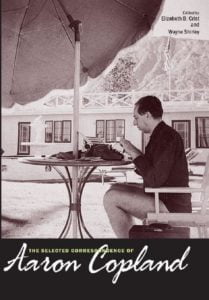 |
|
| Copland, Aaron – 9 Songs |
 |
|
| Copland, Aaron – Danzón Cubano -Piano solo arrangement by Leo Smit |
 |
|
| Copland, Aaron – Los Placeres de la Música (Español-Spanish) Biografía |
 |
|
| Copland, Aaron Piano Variations |
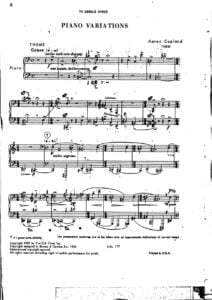 |
Copland, Aaron Piano Variations |
| Corigliano Anna’s theme from The Red Violin | J.-Corigliano-Annas-theme-from-The-Red-Violin (piano solo) 1st page | |
| Corinne Bailey Rae – It’s Easy To Play |
 |
Corinne Bailey Rae |
| Coryell Larry – Jazz Guitar Creative Comping Soloing and Improvising (with Tablature) |
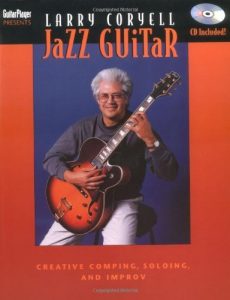 |
|
| Costantino Carrara – Let Her Go (Passenger) |
 |
|
| Coulais – Les Choristes (songbook with voices & piano acc.) |
 |
Coulais – Les Choristes |
| Count Basie – 42 Jazz, Blues And Boogie Piano Solos as recorded by Count Basie |
 |
Count Basie – 42 Jazz, Blues And Boogie Piano Solos as recorded by Count Basie |
| Count basie – Jazz Blues & Boogie Piano Solos as recorded by Count Basie |
 |
Count Basie jazz blues piano |
| Count Basie Blues By Basie Transcriptions |
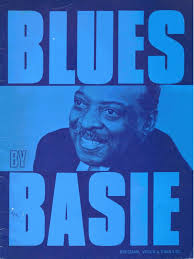 |
Count Basie Blues By Basie Transcriptions |
| Count Basie Collection Artist Transcriptions Piano |
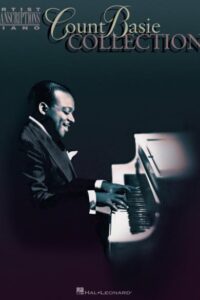 |
Count Basie Collection Artist Transcriptions Piano |
| Count Basie Jazz Piano |
 |
Count Basie jazz piano |
| Count Basie Piano Styles Songbook |
 |
Count Basie piano styles songbook |
| Counterpoint 4th ed – Kennan Kent | Book Theory | |
| Counterpoint for Beginners – Kitson C H | Book Theory | |
| Countingcrows – Colorblind | ||
| Country Guitar Method By Greg Koch With Tablature |
 |
|
| Country Guitar Method Hal Leonard with TAB |
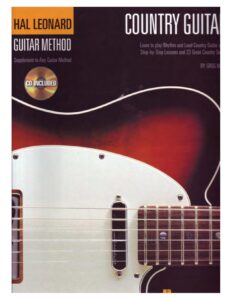 |
Country guitar method sheet music |
| Country Music – Country Music’s Greatest Songs 93 Songs for Voice, Piano & Guitar |
 |
country sheet music |
| Country Music Fake Book |
 |
Country Music Fake Book |
| Country Music The Best Country Songs Ever Third Edition Piano Vocal Guitar Chords |
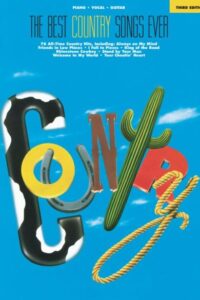 |
Country Music The Best Country Songs Ever Third Edition Piano Vocal Guitar Chords |
| Country Songs The Most Requested Country Songs 47 Songs Piano Vocal Guitar |
 |
Country Songs The Most Requested Country Songs 47 Songs Piano Vocal Guitar |
| Country The Great American Country Songbook |
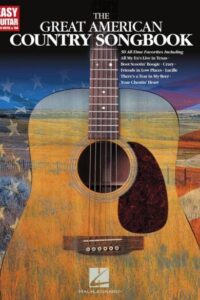 |
Country The Great American Country Songbook |
| Country The Ultimate Country Fake Book 5th Edition C Instruments |
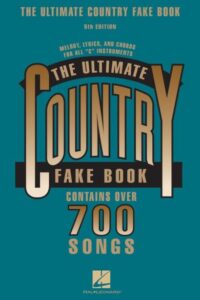 |
|
| Country, The Best In Country sheet music Piano-vocal-chords |
 |
Country, The Best In Country sheet music Piano-vocal-chords |
| Coup De Pouce Guitare Vol. 2 |
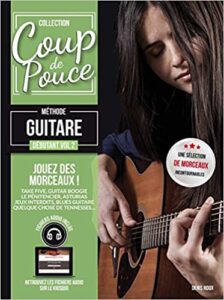 |
Coup De Pouce Guitare Vol. 2 |
| Couperin Complete Keyboard Works |
 |
|
| Cousins – Love Theme (Angelo Badalamenti) | ||
| Cowboy Bebop Clutch (Piano Solo) By Yoko Kanno |
 |
|
| Cowboy Bebop N.Y. Rush Piano Solo From Cowboy Bebop By Kanno Youko |
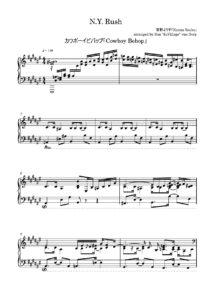 |
|
| Cowboy Bebop Piano Solo From Future Blues Cowboy Bebop By Kanno Youko |
 |
|
| Cowboy Bebop The Real Folk Blues Piano Solo From Cowboy Bebop By Kanno Youko |
 |
|
| Cowboy Bebop Too Good Too Bad (Piano Solo) By Yoko Kanno |
 |
|
| Cowboy Songs Guitar Songbook 62 Songs Incl. Lyrics And Chords |
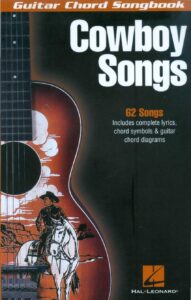 |
Cowboy Songs Guitar Songbook 62 Songs Incl. Lyrics And Chords |
| Craig Armstrong – Portuguese Love Theme (Piano solo sheet music) |
 |
|
| Craig Armstrong Love Actually (Love Theme) Piano Solo | Craig Armstrong Love Actually (Love Theme) Piano Solo | |
| Craig Armstrong Piano Works |
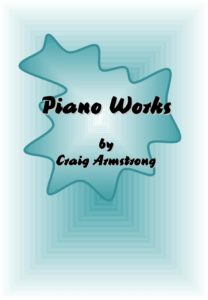 |
Craig Armstrong Piano Works |
| Craigdavid – Insomnia | ||
| Cramer – 84 Studes/Etüden Op. 50 Complete |
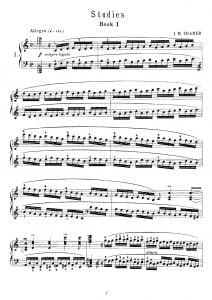 |
|
| Cranberries – The best of (Guitar TAB) |
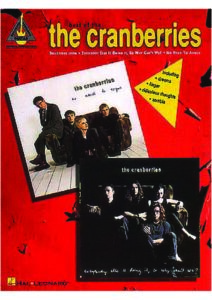 |
Cranberries, The – Best Of |
| Crash Adams Give Me A Kiss (Piano Sheet Music) |
 |
|
| Crazy For You The new Gershwin Musical George and Ira Gershwin book by Ken Ludwig |
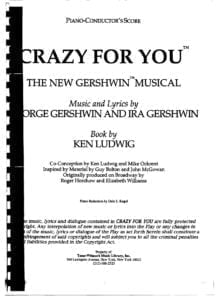 |
Crazy For You The new Gershwin Musical |
| Cream – The Cream of Cream (Guitar Tabs) |
 |
Cream – The Cream of Cream (Guitar Tabs) |
| Cream Rock Score |
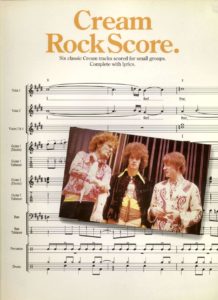 |
|
| Cream Songbook Complete |
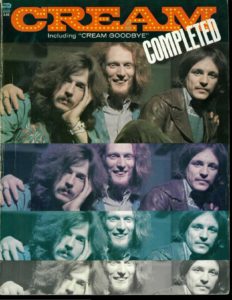 |
Cream Songbook Complete |
| Create First Duet 1 Learning Music the Pattern Play Way by Forrest Kinney |
 |
Create First Duet 1 Learning Music the Pattern Play Way by Forrest Kinney |
| Creating Jazz Bass Lines by Jim Stinnett |
 |
|
| Creative At Piano – Edward Weiss |
 |
|
| Creative comping for Improvisation – by Hal Crook Vol. 2 (Play Along PDF book + MP3 audio tracks) |
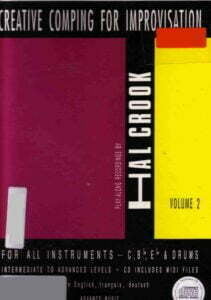 |
Creative comping for Improvisation – by Hal Crook Vol. 2 (Play Along PDF book + MP3 audio tracks) |
| Creative Process in Music From Mozart To Kurtag By William Kinderman (Book) |
 |
|
| Creative Tapping For Modern Guitar with Tablature Book + MP3 Audio Play Along (embedded) byKristof Neyens |
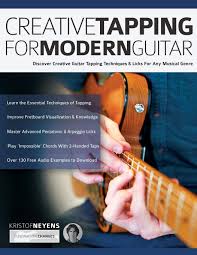 |
|
| Creedence ClearWater Revival – The Best Of (Piano, Guitar, Vocal) |
 |
Creedence ClearWater Revival – The Best Of (Piano, Guitar, Vocal) |
| Creedence Clearwater Revival guitar anthology with TAB |
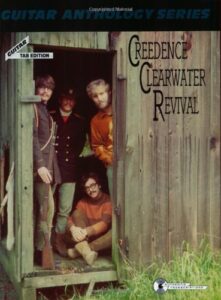 |
Creedence Clearwater Revival guitar anthology |
| Creedence Clearwater Revival, JAM with CCR ( Play long PDF with MP3 audio tracks Guitar Tab Songbook) Ultimate Minus One Guitar Tabs |
 |
Creedence Clearwater Revival, JAM with CCR ( Play long PDF with MP3 audio tracks Guitar Tab Songbook) |
| Creep Radiohead Easy Piano Solo Arr. |
 |
|
| Creep Radiohead Piano Solo Arr Musescore File.mscz | ||
| Creep Sheet Music Radiohead Sheet Music Piano Vocal |
 |
|
| Creole Jazz Band Fake Book |
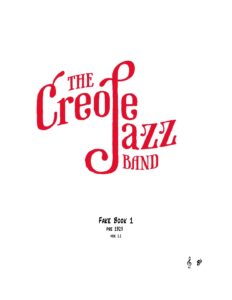 |
Creole Jazz Band Fake Book |
| Creston Concerto for Alto Saxophone and Orchestra reduction for Saxophone and Piano |
 |
|
| Crime And Punishmet – Fullmetal Alchemist Brotherhood Akira Senju |
 |
|
| Crimes of the heart – Main Theme (Georges Delerue) | ||
| Cris Velasco – Wintermure The Long Dark Theme | Cris Velasco – Wintermure The Long Dark Theme | |
| Cris Velasco – Crossroads Elegy (The Long Dark) |
 |
|
| Crosby Stills And Nash Songbook Guitar TABs |
 |
Crosby Stills And Nash Songbook Guitar TABs |
| Crosby Stills Nash And Young Deja Vu |
 |
Crosby Stills Nash And Young Deja Vu |
| Crosby Stills Nash And Young Woodstock Guitar TABs | Crosby Stills Nash And Young Woodstock Guitar TABs | |
| Crosby Stills Nash Young The Guitar Tablature TABs Collection |
 |
Crosby Stills Nash Young The Guitar Tablature TABs Collection |
| Cruella De Vil – 101 Dalmatians |
 |
|
| Cruella De Vil – 101 Dalmatians (Musescore File).mscz | ||
| CSNY Crosby Stills Nash And Young (Book Biography) by Peter Doggett |
 |
|
| Cuban Fake Book No. 1 |
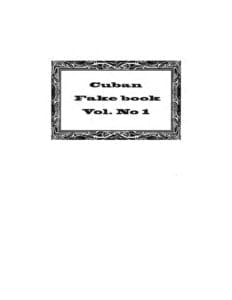 |
Cuban Fake Book No. 1 |
| CURSO de FORMAS MUSICALES – Joaquin Zamacois (Spanish-Español) | ||
| Curso De Piano Para Principiantes Y Adultos por James Bastien (Spanish-Español) |
 |
Bastien |
| Curtis Mayfield – It’s All Right (featured in Soul) |
 |
|
| Curtis Mayfield Move On Up |
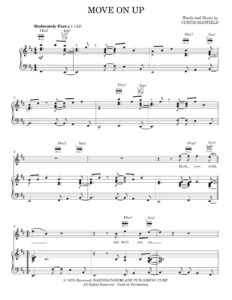 |
|
| Cy Coleman Anthology Piano Vocal Guitar Chords |
 |
Cy Coleman Anthology Piano Vocal Guitar Chords |
| Cy Coleman The Will Rogers Follies Peter Stone, Betty Comden, Adolph Green |
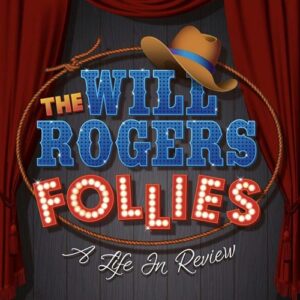 |
Cy Coleman The Will Rogers Follies Peter Stone, Betty Comden, Adolph Green |
| Cyndi Lauper – Time After Time | ||
| Cyndi Lauper Time After Time | Cyndi Lauper – Time After Time | |
| Cyndi Lauper True Colors | Cyndi Lauper True Colors | |
| Czerny – 100 Progressive Studies, op 139 | Czerny – 100 Progressive Studies, op 139 | |
| Czerny – 110 Easy and Progressive Exercises, op 453 |
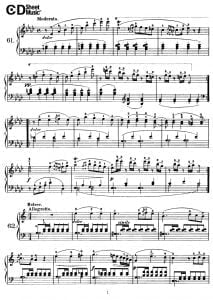 |
|
| Czerny – 125 Exercises in Passage Playing, op 216 | Czerny 125 exeecises | |
| Czerny – 160 Eight-Measure Exercises, op 821 | Czerny 160 exercises | |
| Czerny – 24 Piano Studies for the Left Hand Op.718 | Czerny, Carl-Etudes for the left hand Op 718 | |
| Czerny – 40 Daily Exercises, op 337 | Czerny 40 daily exercises | |
| Czerny – Practical Finger Exercises Op.802 | Czerny op 802 | |
| Czerny – Practical Method For Beginners On The Pianoforte Op 599 |
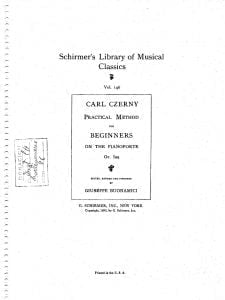 |
|
| Czerny – Preliminary School of Finger Dexterity, op. 636 | Czerny – Preliminary School of Finger Dexterity, op 636 | |
| Czerny – Selected Studies For The Piano – An Anthology | Carl Czerny – Selected Studies For The Piano – An Anthology | Carl Czerny – Selected Studies For The Piano |
| Czerny – The Little Pianist, op 823 | Czerny op 823 the little pianist | |
| Czerny 636 Preparatory School Of Velocity Exercise Sampler Musescore File.mscz | ||
| Czerny Art Of Finger Dexterity Op 740 |
 |
|
| Czerny Carl Czerny Practical Method For Beginners Op 599 |
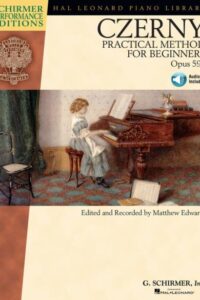 |
|
| Czerny Octave studies op. 553 |
 |
|
| Czerny Op 299 The school of velocity |
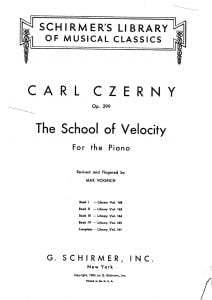 |
|
| Czerny, Carl El Primer Maestro De Piano (Cien estudios diarios) |
 |
|
| Czerny, Carl 25 Fortschreitende Uebungen Op 748 |
 |
|
| Czerny, Carl-Etudes de Mechanisme Op 849 |
 |
|
| Cziffra Grieg – Improvisation on Peer Gynt op. 46-4 |
 |
|
| Cziffra Transcriptions Vol I |
 |
Cziffra Transcriptions Vol I |
| Cziffra Transcriptions Vol II |
 |
|
| D. N. Angel – True Light | ||
| Dadi – La guitare à Dadi Vol. 3 by Marcel Dadi (text in French, français) avec TABs |
 |
Dadi – La guitare à Dadi Vol. 3 by Marcel Dadi (text in French, français) avec TABs |
| Daiki Tsuneta Hakujitsu Innocence False Attorney (arr. Kobayashi) |
 |
|
| Daisuke Minamizawa The Spirit Of The Guitar TABLATURE |
 |
Daisuke Minamizawa The Spirit Of The Guitar TABLATURE |
| Daisuke Minamizawa The Spirit Of The Guitar TABs Special Hisaishi and Hayao Miyazaki |
 |
Daisuke Minamizawa The Spirit Of The Guitar TABs Special Hisaishi and Hayao Miyazaki |
| Daisuke Minamizawa- Fingerstyle guitar solo arr. + Tablature |
 |
Daisuke Minamizawa- Fingerstyle guitar solo arr. + Tablature |
| Daisy’s Ballet Career (The Curious Case of Benjamin Button OST) | ||
| Dale Turner Ska Guitar Book + Audio Mp3 Tracks To Play Along |
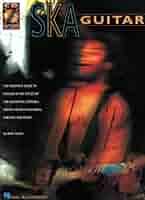 |
|
| Damien Rice – 9 Crimes | ||
| Damien Rice – Accidental Babies | ||
| Damien Rice – Rootless Tree | ||
| Damien Rice – The Blowers Daughter | ||
| Dammi solo un minuto (Pooh) | ||
| Dan Coates Classic Coates Piano Solos For The Late Intermediate Student |
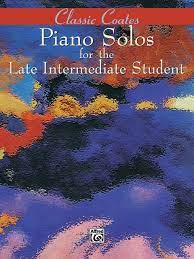 |
Dan Coates Classic Coates Piano Solos For The Late Intermediate Student |
| Dan Coates Rhapsody In Blue And 45 Creative Piano Solos |
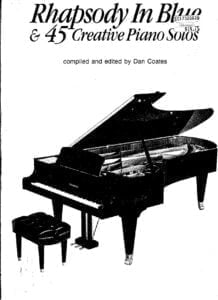 |
Dan Coates Rhapsody In Blue And 45 Creative Piano Solos |
